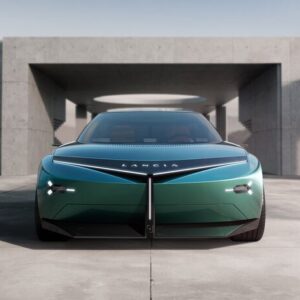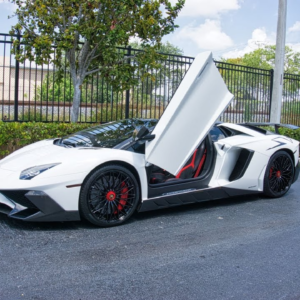From the October 2023 issue of Car and Driver.
Sitting still, the Porsche 911 GT3 RS looks absolutely feral. Unless your name is Shaq, that cliché line about the rear wing being a picnic table doesn’t track, because it’s too high off the ground. Lest you dismiss this quarter-million-dollar car as just another 911 in a long line of variants, know that there isn’t a single body panel shared with a standard Carrera. The carbon-fiber door skins necessitate actual door handles, not the pop-up flaps on a regular 911. This is every bit as wild a road car as the 1990s mid-engine Porsche GT1. And that car was built to win Le Mans.

Although southeast Michigan has a Milan and there’s a London nearby, its roads are hardly those of Sarthe. We were expecting the bewinged RS to have a brutal on-road ride, but we’re able to report that the GT3 RS feels no firmer than a regular GT3 despite having roughly 50 percent stiffer spring rates. Some of that compliance may come from the softer carbon-fiber anti-roll bars—extra roll resistance isn’t needed when the suspension is so stiffly sprung.
On the track, you’d never guess there’s softer anything. Once you dial in all the chassis settings [see “Play Station”] or even if you just leave them alone, the car’s limits are quite approachable. The wail of the 518-hp, 9000-rpm flat-six (our testing team insists it revs to only 8900) pierces straight through the carbon-fiber layers of an Arai helmet, but the engine is a puppy dog that just wants to run. The torque peak is at 6300 rpm, and it’s a relatively puny 342 pound-feet. Put all your trust in the seven-speed dual-clutch, and put your foot in it. Even if you’re off the pace, it feels fast. Overdrive it, and understeer reminds you you’re not that good—don’t blame the diff-lock position.

Sure, there are lots of settings, and it’s easy to get lost moonlighting as a calibration engineer sifting through all of the possible suspension, differential, aero, and stability- and traction-control combinations. But it’s good to know that the end user really can’t set the car up wrong, according to Porsche GT boss Andreas Preuninger. A little more rebound damping on the rear axle may help the RS feel more planted bounding over curbing. Or, depending on the aggressiveness and angle of the concrete serrations, maybe less compression is what you want. It depends on the track and the driver. The point is, all of these settings allow the driver to tailor the feel of the GT3 RS in a way no other car has ever offered.
The GT3 RS is 30 pounds lighter than a similar-spec GT3. But at 124 mph, the RS gains roughly 900 pounds (that’s the downforce number most will exploit). At top speed, which is 177 mph in the high-downforce setting (the low-downforce DRS mode will allow it to do 183), the load on the GT3 RS’s tires is nearly 1900 pounds more than when it’s sitting still. That’s a lot of aero stick. Funny enough, at triple-digit speeds, toggling the DRS on and off comes with a change in engine note as the engine load jumps.

The Michelin Pilot Sport Cup 2 Rs, 275s in front (stuffed under wider fenders) and 335s out back, cling to the skidpad at 1.16 g’s and help haul the car down from 70 mph in 133 feet. The RS is fast between corners too—about as quick as a regular GT3 in a straight line, posting an identical 10.9-second quarter-mile time.

This GT3 RS, likely the last GT3 RS without some form of electrification, is amazingly capable like a McLaren Senna yet civilized like a Chevy Corvette. It’s shocking, but then you remember that Porsche has been refining this formula for 60 years. We can’t wait to quantify its track performance at Lightning Lap later this year.





